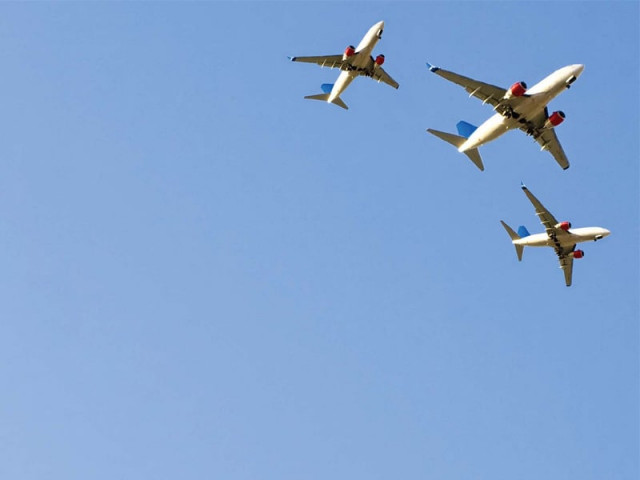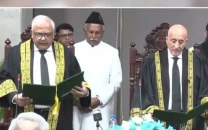Air space wars: Three new airlines to fly domestic routes
Indus Air, Bhoja Air and Pearl Air are all set to take off next year.

Air space wars: Three new airlines to fly domestic routes
The sharp rise in air passengers in recent years has prompted at least three business groups to start their engines and try and capture part of the local aviation industry, officials told The Express Tribune on Friday.
Indus Air, Bhoja Air and Pearl Air are all set to launch flights in 2012 on domestic routes, according to a senior official of the Civil Aviation Authority (CAA). The new entrants will go head-to-head with national carrier Pakistan International Airlines (PIA), Air Blue and Shaheen Air to get a foot-hold in the domestic aviation industry.
Indus Air, a fresh entrant, was recently awarded a licence to fly while Bhoja Air is re-launching its operations after a gap of 12 years.
Meanwhile, Pearl Air was among the airlines, which were issued licences in the 1990s when Pakistan adopted the open-sky policy. Pearl Air’s sponsors have finally begun efforts to start their aircraft business.
“We need at least two more carriers,” said a senior CAA official. “Passengers are being subject to longer and longer wait times at airports and flight cancellation has become a norm. Existing airlines operating with a limited number of aircraft are having a hard time dealing with passenger flow.”
Despite an increase in fares, the number of air travellers within the country jumped to 3.6 million in fiscal 2011 compared with 3.5 million in fiscal 2010.
“The dilapidated state of Pakistan railways has forced passengers opt for the aerial route and has added to the pressure on airlines,” official said.
The three airlines will work under stricter controls considering the setbacks small Pakistani carriers faced in the past and the embarrassment suffered by the regulator CAA.
Except for sponsors of Bhoja Air, the people behind Pearl Air and Indus Air have no previous experience in the aviation industry.
Indus Air has also been a subject of various rumours recently, suggesting that the owners had connections with the government. The fact that it managed to get a licence in a very short time added fuel to these rumours. But a senior CAA official who was close to the process said there was no proof to suggest connections between the sponsors and top government functionaries.
The man behind Karakoram Motors, Abdul Wahab, is the lead investor of Indus Air. “He has been wooed into the business by former PIA officials who are on the board of directors of the carrier,” the CAA official said. Wahab was not available for comments.
A general manager at Karakoram Motors’ office said nothing has been finalised as yet. The model of aircraft is still being considered, the official added.
However, according to CAA, the airline has contracted four Boeing 737-300 aircraft from a company in Bulgaria. Aircraft inspectors will shortly fly to the country to review the condition of the aircraft, official said.
Bhoja Air’s Chairman Farooq Omar Bhoja said he cannot say when the airline starts flying. “It’s too early to say anything.” Without sharing details, he said that Bhoja was grounded by CAA in October 2000.
After former Prime Minister Nawaz Sharif opened country’s airspace in 1993, Bhoja leased B 737-200s. It was grounded after it started losing money and failed to clear CAA dues.
Bhoja Air has appointed Arshad Jalil as its managing director. Jalil was CEO of Shaheen Air for a longtime and owns an aircraft maintenance company.
Pearl Air was among the airlines, which were issued licences in the 1990s but it never actually flew. However, its sponsors have renewed efforts to get aircraft and restart operations.
When Pakistan adopted the open sky policy, more than 20 airline licenses were issued to different business groups, however, none of them except Shaheen survived.
The last airline to declare bankruptcy was Aero Asia. “We have learnt our lessons,” said the CAA official. “None of the new airlines or the ones renewing operations will be allowed to fly on foreign routes for at least a year.”
Published in The Express Tribune, December 10th, 2011.


















COMMENTS
Comments are moderated and generally will be posted if they are on-topic and not abusive.
For more information, please see our Comments FAQ